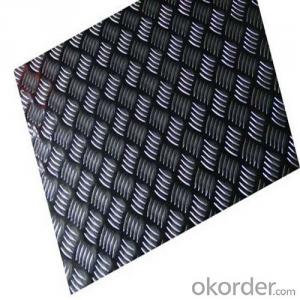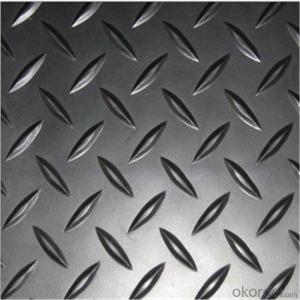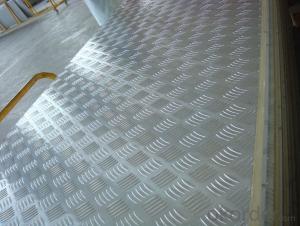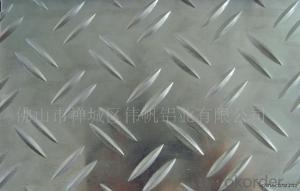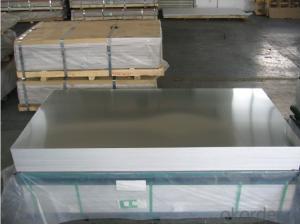Bright Aluminum Tread Plate
Bright Aluminum Tread Plate Related Searches
Led Light Bulbs For Ceiling Fixtures Led Lamps For Ceiling 42 In Ceiling Fan With Light Aluminum Coil Stock For Gutters Aluminum Foil For The Grill Hole Saw For Aluminum Plate Aluminum Tread Plate For Trailer Bow Plate For Aluminum Boat Aluminum Foil For Grow Room Aluminum Foil For Joint PainHot Searches
Stock Price For Aluminum Aluminum Coil Stock For Sale Aluminum Gutter Coil For Sale Used Aluminum Scaffolding For Sale 1/4 Aluminum Plate For Sale Aluminum Bar Stock For Sale Aluminum Round Stock For Sale Aluminum Diamond Plate For Sale Aluminum Scaffolding For Sale Craigslist 6061 Aluminum Plate For Sale Aluminum Dock Plate For Sale 7075 Aluminum Plate For Sale Aluminum Tread Plate For Sale Aluminum Checker Plate For Sale Aluminum Plate For Sale Near Me Plate Aluminum For Sale Aluminum Plate For Sale Aluminum Square Stock For Sale Aluminum Flat Stock For Sale Billet Aluminum Stock For SaleBright Aluminum Tread Plate Supplier & Manufacturer from China
Okorder.com is a professional Bright Aluminum Tread Plate supplier & manufacturer, offers integrated one-stop services including real-time quoting and online cargo tracking. We are funded by CNBM Group, a Fortune 500 enterprise and the largest Bright Aluminum Tread Plate firm in China.Hot Products
FAQ
- The standard size of an aluminum sheet can vary depending on the specific application and industry. However, in general, aluminum sheets are commonly available in standard sizes of 4 feet by 8 feet or 48 inches by 96 inches. These dimensions are widely used in construction, manufacturing, and other industries due to their versatility and compatibility with standard equipment and processes. However, it's important to note that aluminum sheets can also be custom cut or ordered in different sizes to meet specific project requirements.
- How does the reflective film stick to the aluminum plate?
- Put the plate clean, dry, reflective film a head from the aluminum back 2CM at the beginning attached to the aluminum plate, wrapping, pull to the front, back and side brush paper hanging tear reflective film side with the hanging brush to the aluminum paste, try to avoid bubbles.
- Need to polish some small aluminum tubing, preferably to chrome like shine. What tools do I need? Thinking about buying 6 bench grinder, buffing? wheels and polish compound... Does it sound about right?
- Aluminum oxidizes almost instantly, so it is never going to keep a good shine. You can send it to a plating shop and they will anodize it, which means a permanent oxidized layer and that may or may not retain some shine but at least it won't ever change much. (But it is easily stained.) Consider plating some other metal on the surface. You will need advice from a plating shop about that. Maybe you could use chrome plated water pipe? That would be cheaper than a custom job.
- There are several different types of finishes available for painted aluminum sheets, each offering unique characteristics and benefits. 1. Matte Finish: This finish provides a non-reflective, dull appearance to the painted aluminum sheet. It is commonly used in applications where a low-gloss finish is desired, such as architectural elements or interior design. 2. Gloss Finish: A gloss finish gives the painted aluminum sheet a shiny, reflective surface. It is often chosen for applications where a sleek and polished appearance is desired, such as automotive parts or decorative panels. 3. Textured Finish: A textured finish adds a raised pattern or texture to the surface of the painted aluminum sheet. This type of finish is commonly used for decorative purposes, as it can enhance the visual appeal and provide a unique tactile experience. 4. Metallic Finish: A metallic finish gives the painted aluminum sheet a metallic appearance, resembling the look of metal alloys like stainless steel or bronze. This finish is frequently used in architectural applications to achieve a modern and high-end aesthetic. 5. Powder Coating Finish: Powder coating is a popular finishing method that involves applying a dry powder to the surface of the painted aluminum sheet and then curing it under heat. This process creates a durable and seamless finish that is resistant to chipping, scratching, and fading. 6. Clear Coat Finish: A clear coat finish is often applied over a painted aluminum sheet to provide an extra layer of protection and enhance its durability. This finish is typically transparent and helps to resist damage from UV rays, moisture, and other environmental factors. It is important to consider the intended use and desired aesthetic when choosing a finish for painted aluminum sheets, as each type offers its own unique benefits and characteristics.
- Cryogenic applications can indeed utilize aluminum sheets. The thermal conductivity and low temperature characteristics of aluminum render it an appropriate substance for cryogenic settings. It can endure exceedingly low temperatures without succumbing to brittleness or compromising its structural integrity. Furthermore, aluminum is both lightweight and resistant to corrosion, rendering it a pragmatic selection for cryogenic applications where weight and durability are crucial considerations. Nevertheless, it is imperative to ascertain that the precise aluminum alloy selected is compatible with the intended cryogenic application, as different alloys may exhibit differing properties and performance levels at lower temperatures.
- Yes, 101 aluminum sheets typically have certifications and standards that ensure their quality and performance. These may include certifications like ASTM (American Society for Testing and Materials) and standards such as AA (Aluminum Association) standards, which verify the material's composition, mechanical properties, and manufacturing processes. Additionally, specific industry certifications like ISO 9001 (International Organization for Standardization) may be applicable to ensure consistent quality control during production.
- Yes, aluminum sheets are suitable for food storage applications. Aluminum is a non-toxic and non-reactive metal that does not impart any taste or odor to food. It provides an excellent barrier against light, moisture, and oxygen, which helps in preserving the quality and freshness of the stored food. Additionally, aluminum sheets are lightweight, durable, and recyclable, making them a popular choice for food storage.
- No, aluminum sheet can be used for electrical conductivity applications. Aluminum is a highly conductive metal, second only to copper in terms of electrical conductivity. It is commonly used in electrical wiring, power transmission lines, and electrical components. Aluminum sheets can be used in applications where electrical conductivity is required, such as in the construction of electrical panels, bus bars, and heat sinks. However, it is important to note that the thickness and purity of the aluminum sheet can affect its conductivity, so these factors should be considered when choosing the appropriate aluminum sheet for a specific electrical application.










